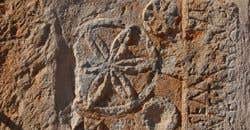From £11.50
I have tasted two superb Spanish whites made from Albillo grapes recently. This together with the fact that I nominated Bodega Marañones, Picarana 2009 Vinos de Madrid as a wine of the week in January 2011 inspires me to suggest that any wine made from the old vines called Albillo to the north of Madrid may be worthy of your consideration.
The particularly stunning wine tasted recently was Adrada Ecológica, Ácrata Albillo 2010 Vino de la Tierra Castilla y León (enough As for you?). It was sent, twice (the first bottle smashed en route), by the owner of the interestingly eclectic new wine store in Paris’s Marais district, Soif d’Ailleurs, because its producer claims it contains just 45% Albillo, 45% Pirulés (a synonym for the Extremadura grape Alarije) with small portions of Garnacha Blanca, Moscatel and Airén. Grown on three hectares of 70- to 100-year-old bushvines at 900-1,000 m elevation in the Ribera del Duero zone, and tilled by ‘animal traction’ according to the technical details amassed by the producer, this is a beautifully rich but dry, full-bodied wine with tension and more than a hint of beeswax, a common characteristic of these Albillo-dominated wines. It was fermented in old barrels over five months and then aged further before being bottled in October 2011. Only 1,400 bottles were produced so it is hardly surprising that this wine does not feature on wine-searcher.com, alas. Alcoholic strength is 14% and the wine tastes as though it will drink well over the next four years. This is serious stuff that deserves to sit on the dinner table with some fairly complex food – shellfish or a rich chicken dish, perhaps. It is not really an aperitif style. I gave this wine 17.5 out of 20 in this tasting note.
The same can be said of the rather easier-to-find Ermita del Conde, Albillo Centenario 2011 Vino de la Tierra Castilla y León, which will be on sale at The Wine Society from next Thursday for just £11.50 per 13.5% bottle. This comes from Coruña del Conde just outside the Ribera del Duero zone, a village whose ancient stonework is shown here, from 100-year-old vines and was aged for six months in French oak. Like the Ácrata, it has a strong skein of fresh green acidity. In fact I would hold it until next year and wait until it unfurls a little. It has a hint of struck match on the nose but underneath has far, far more complexity than most wines at this price and is a real steal. It already carries a suggestion of beeswax but I think this will increase as the youthful acidity diminishes. For what its worth, I gave this wine 17 out of 20.
As we note in detail in Wine Grapes, at least two distinct Spanish vine varieties are called Albillo, Albillo Mayor and Albillo Real (the Wine Society specify the first as the variety in Ermita del Conde’s wine) but official statistics and the general literature is not always good at distinguishing between them. There is also a variety known as Albillo or Albilla de Manchuela and Albillo de Albacete which, as we point out in the book, has been shown by DNA analysis to be distinct from Albillo Mayor and Albillo Real, even though the wines it produces, such as Ponce, Reto 2010 Manchuela, a wine of the week in December 2011, taste remarkably similar.
If you put ‘Albillo’ in the search box for wine-searcher.com, nothing comes up. But I suggest you try your local Spanish wine specialist. Indigo would be a good bet in the UK, for instance (although their current example, Jiménez-Landi's Las Uvas de la Ira – meaning 'the grapes of wrath' is available only in restaurants). Perhaps Eric Solomon in the US.
Best of luck!

